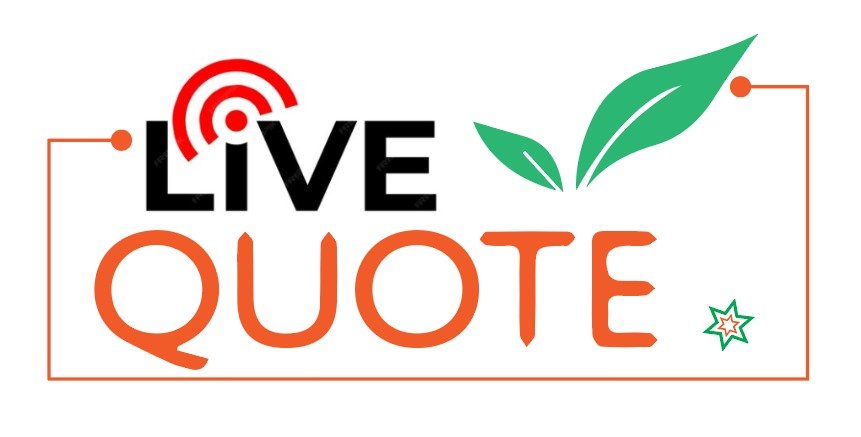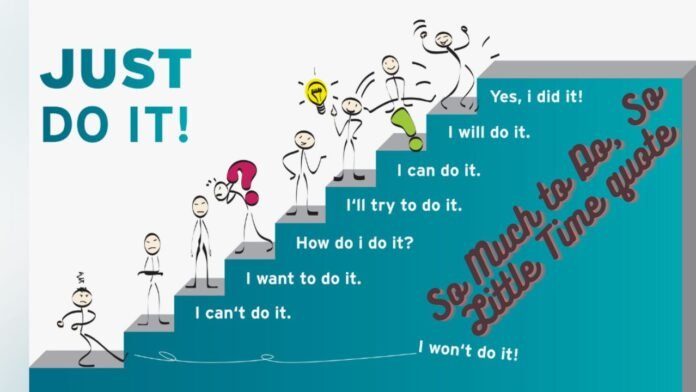Time is our most precious resource, yet we often need help managing effectively. The famous quote “so much to do, so little time quote” encapsulates the perennial challenge many individuals face in today’s fast-paced world. In this article, we’ll delve into the intricacies of time management, exploring strategies to conquer overwhelming schedules and make the most of every moment.
Time Management Challenges
Time management is not merely about squeezing more tasks into each day but optimizing our time to achieve our goals efficiently. It involves recognizing the value of time and allocating it wisely to tasks and activities that align with our priorities.
However, despite its importance, there is so much to do in so little time, meaning many people grapple with effective time management due to various obstacles.
Strategies for Effective Time Management
Prioritization Techniques
Prioritization techniques are indispensable tools in the arsenal of effective time management. In a world where demands constantly compete for our attention, prioritizing tasks can make all the difference in staying focused and achieving our goals.
One popular method is the Eisenhower Matrix, which categorizes tasks into four quadrants based on urgency and importance. Another approach is the ABC prioritization method, which ranks tasks according to significance.
By employing these techniques, individuals can allocate their time and resources more efficiently, tackling high-priority tasks first and minimizing time spent on less critical activities.
Ultimately, mastering prioritization techniques enables individuals to maximize productivity and make meaningful progress toward their objectives.
Setting SMART Goals
Setting SMART goals is a powerful strategy for achieving success in personal and professional endeavours. SMART stands for Specific, Measurable, Achievable, Relevant, and Time-bound.
Following this framework, individuals can create clear, actionable objectives that increase motivation and productivity.
Specific goals provide clarity by clearly defining what needs to be accomplished. Measurable goals allow progress to be tracked and quantified, providing tangible evidence of success.
Achievable goals are realistic and within reach, ensuring individuals are not setting themselves up for failure.
Relevant goals align with broader objectives and contribute to overall success.
Finally, time-bound goals have a defined deadline, creating a sense of urgency and accountability. By setting SMART goals, individuals can turn their aspirations into reality and unlock their full potential.
Avoiding Procrastination
Procrastination, the art of delaying tasks or decisions, can significantly hinder productivity and success. However, it’s possible to overcome this tendency and accomplish more in less time with the right strategies.
One effective approach is to break tasks into smaller, more manageable steps. By focusing on completing small portions of a task at a time, rather than tackling it all at once, individuals can alleviate feelings of overwhelm and make progress gradually.
Additionally, setting specific goals and deadlines can provide motivation and accountability, making procrastinating less tempting.
Finally, cultivating self-awareness and recognizing the triggers that lead to procrastination can empower individuals to take proactive steps to avoid falling into this productivity trap.
By implementing these strategies, anyone can effectively overcome so much to do so little time, quote Alice in Wonderland, and unlock their full potential.
Tools and Resources for Time Management
Tools and resources for time management play a vital role in helping individuals optimize their productivity and make the most of their valuable time. In today’s digital age, many tools are available to assist in organizing tasks, prioritizing activities, and tracking progress.
There is so much to do in so little time. Short-time-tracking apps such as Toggl and RescueTime help individuals monitor their daily activities, identify time-wasting behaviours, and allocate time more effectively.
Task management software like Todoist and Asana enables users to create to-do lists, set deadlines, and collaborate with team members, ensuring tasks are completed on time. Tools such as Google Calendar allow individuals to schedule appointments, set reminders, and plan their days efficiently.
By leveraging these tools and resources, individuals can streamline their workflows, reduce stress, and achieve greater productivity.
Overcoming Overwhelm
Breaking Tasks into Smaller Steps
Breaking tasks into smaller steps is a powerful strategy for enhancing productivity and reducing overwhelm. When faced with a daunting task, dividing it into smaller, more manageable steps can make it seem less intimidating and more achievable.
The approach allows individuals to focus on one aspect of the task at a time, making progress incrementally.
Breaking tasks into smaller steps helps maintain momentum and prevent procrastination, as each step provides a sense of accomplishment and motivation to continue.
By breaking down complex tasks into bite-sized actions, individuals can effectively navigate challenges, overcome obstacles, and accomplish their goals more easily and efficiently.
Seeking Support and Delegation
In achieving our goals, seeking support and delegation play pivotal roles. Often, we may feel overwhelmed by the multitude of tasks before us. This is where seeking support from others becomes crucial.
Whether seeking advice from mentors, collaborating with peers, or simply asking for help from friends and family, support can provide valuable insights and encouragement.
Additionally, delegation allows us to focus our energy on tasks that truly require our attention.
By entrusting certain responsibilities to capable individuals, we not only lighten our workload but also foster a sense of teamwork and collaboration.
Delegation empowers others and promotes efficiency, leading to greater productivity and success.
In summary, seeking support and delegation are not signs of weakness but strategies for success. Embracing these practices can help us navigate challenges more effectively and achieve our goals more easily.
Embracing the Journey
Embracing the journey is more than just moving forward; it’s about finding joy and fulfilment in every step. Life is a series of experiences, challenges, and moments that shape who we are and where we’re headed.
By embracing the journey, we acknowledge that our path is as significant as the destination we’re striving for.
Each twist, turn, triumph, and setback contribute to our growth and development. Instead of fixating solely on reaching our goals, we learn to appreciate the lessons learned along the way.
Embracing the journey allows us to savour the present moment, fostering gratitude for the experiences that enrich our lives.
Ultimately, it’s about finding beauty in the process, celebrating the small victories, and recognizing that the journey is the destination we seek. So, let’s embrace the journey with open hearts and open minds, embracing the unknown and relishing in the adventure of life.
Maintaining Work-Life Balance
Maintaining a healthy work-life balance is essential for overall well-being and productivity. Balancing professional responsibilities with personal interests and relationships is key to preventing burnout and maintaining long-term success. Prioritizing self-care and setting boundaries around work-related activities are critical to achieving work-life balance.
Conclusion
Mastering the art of time management is essential for successfully navigating modern life’s complexities. By implementing prioritization, goal setting, and leveraging tools and resources, individuals can conquer overwhelming schedules and make the most of every moment.
Remember, it’s not about doing more but doing what matters most with the time we have.
FAQ
What is A Famous Quote About Time?
One famous quote about time comes from the renowned author William Shakespeare: “Better three hours too soon than a minute too late.” This timeless phrase emphasizes the importance of punctuality and the value of time. It suggests that it’s preferable to be early or prepared well in advance rather than risking being late or unprepared. This quote serves as a reminder of the significance of time management and its impact on our daily lives.
Who Said So Much To Do So Little Time To Do It?
The quote “So much to do, so little time to do it” is often attributed to various sources, and its origins are somewhat uncertain. One notable attribution is to American journalist and author Agatha Christie. However, it’s worth noting that numerous individuals have expressed similar sentiments throughout history, reflecting the universal struggle of managing time amidst life’s myriad responsibilities and opportunities. This particular quote resonates with many people as it succinctly captures the feeling of being overwhelmed by tasks and obligations while grappling with the finite nature of time.
When Do You Have Little Time For Quotes?
When you have little time to spare, it’s essential to prioritize effectively and make the most of the available moments. Rather than feeling overwhelmed by the scarcity of time, focus on identifying the most critical tasks or activities that need attention. Streamline your efforts by breaking down larger tasks into smaller, manageable steps, allowing you to progress even within tight time constraints. Additionally, consider leveraging time-saving techniques such as setting strict deadlines, delegating tasks when possible, and minimizing distractions to maximize productivity. Remember, it’s not about the quantity of time available but how efficiently you utilize the time you have
What Are 2 Famous Quotes?
“The only way to do great work is to love what you do.” – Steve Jobs
“In the end, we will remember not the words of our enemies, but the silence of our friends.” – Martin Luther King Jr.
What is A Time Caption?
A time caption, often referred to as a timestamp or time marker, is a notation that indicates the specific time an event occurred, a task was completed, or a message was sent or received. In various contexts, such as social media posts, digital communication platforms, or multimedia presentations, time captions provide chronological context, allowing viewers or readers to understand when the content was created or shared. For example, on social media platforms like Instagram or Twitter, time captions accompany posts to show the time and date the content was uploaded. Similarly, in messaging apps, time captions indicate when a message was sent or received, aiding communication and comprehension. Overall, time captions play a crucial role in providing temporal information and enhancing the clarity and relevance of the content.


